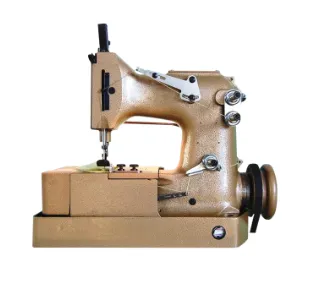Lock Stitch Sewing Machine: Enhancing Efficiency with Advanced Stitching Technology
The lock stitch sewing machine remains a cornerstone in both domestic and industrial sewing, celebrated for producing a strong and durable seam that withstands wear and tear. Its universal use across apparel, upholstery, and technical textiles underscores the importance of understanding the various types and capabilities available—ranging from the single needle lock stitch sewing machine to more complex 2 needle lockstitch machines designed for specialized sewing tasks. High productivity environments benefit greatly from the high speed lockstitch sewing machine, which combines speed and precision to meet demanding manufacturing schedules.

Understanding the Mechanics of the Lock Stitch
The lock stitch is created when the needle thread interlocks with the bobbin thread beneath the fabric, forming a secure stitch on both sides. This construction results in seams that are not only neat but also highly resistant to unraveling. The 301 lock stitch is the most common and standard stitch used worldwide for sewing straight seams and topstitching. It is favored for its balanced stitch formation and consistent tension, suitable for a wide variety of fabrics and applications.
A detailed lock stitch sewing machine drawing reveals the interaction between key components like the hook, bobbin, needle, and feed mechanism. These elements work in unison to ensure precise stitch formation, fabric feeding, and thread tension management, which are crucial for maintaining stitch integrity at varying speeds.
Variations of Lock Stitch Sewing Machines for Different Applications
The choice between a 1 needle lockstitch sewing machine and a 2 needle lockstitch machine depends on the type of sewing project. The single needle lock stitch sewing machine is versatile and widely used for straight seams and finishing, suitable for most garment manufacturing. Meanwhile, the 2 needle lockstitch machines are ideal for creating parallel rows of stitching, often found in denim jeans, sportswear, and decorative seams.
Industrial settings often deploy the industrial lockstitch sewing machine designed to withstand continuous use and handle heavy materials like leather, canvas, and denim. These machines often feature robust motors, automatic thread trimming, and programmable stitch length to maximize production efficiency.
Lock Stitch Versus Overlock Chain Stitch: Choosing the Right Stitch
While the lockstitch provides durable, non-elastic seams, the overlock chain stitch offers stretchability and edge finishing by looping threads around fabric edges to prevent fraying. The overlock chain stitch is essential for knitwear and stretch fabrics, but lacks the seam strength of the lock stitch. Many production lines integrate both lock sewing machines and overlock machines to achieve optimal seam strength and finish.
In summary, the lock stitch sewing machine—from the standard 301 lock stitch to high-end high speed lockstitch sewing machines—is fundamental to achieving quality seams in garment and textile production. Understanding the differences between single needle lock stitch sewing machines and 2 needle lockstitch machines, as well as their mechanical functions through lock stitch sewing machine drawings, empowers manufacturers to select the best equipment for their needs. Coupled with knowledge of complementary stitches like the overlock chain stitch, this expertise drives efficiency and product quality across sewing operations.
-
Maximize Efficiency with an Industrial Cylinder Arm Sewing MachineNewsAug.28,2025
-
Precision Stitching With a Cylinder Bed Leather Sewing MachineNewsAug.28,2025
-
Streamline Production with the Cylinder Bed Sewing MachineNewsAug.28,2025
-
Precision Meets Creativity With The Pattern Sewing MachineNewsAug.28,2025
-
Upgrade Your Workshop With An Industrial Flat Bed Sewing MachineNewsAug.28,2025
-
Discover Precision With The Flat Bed Sewing MachineNewsAug.28,2025
-
Automatic Pattern Sewing Machine: Unlocking New Possibilities with CNC Sewing TechnologyNewsAug.26,2025


























